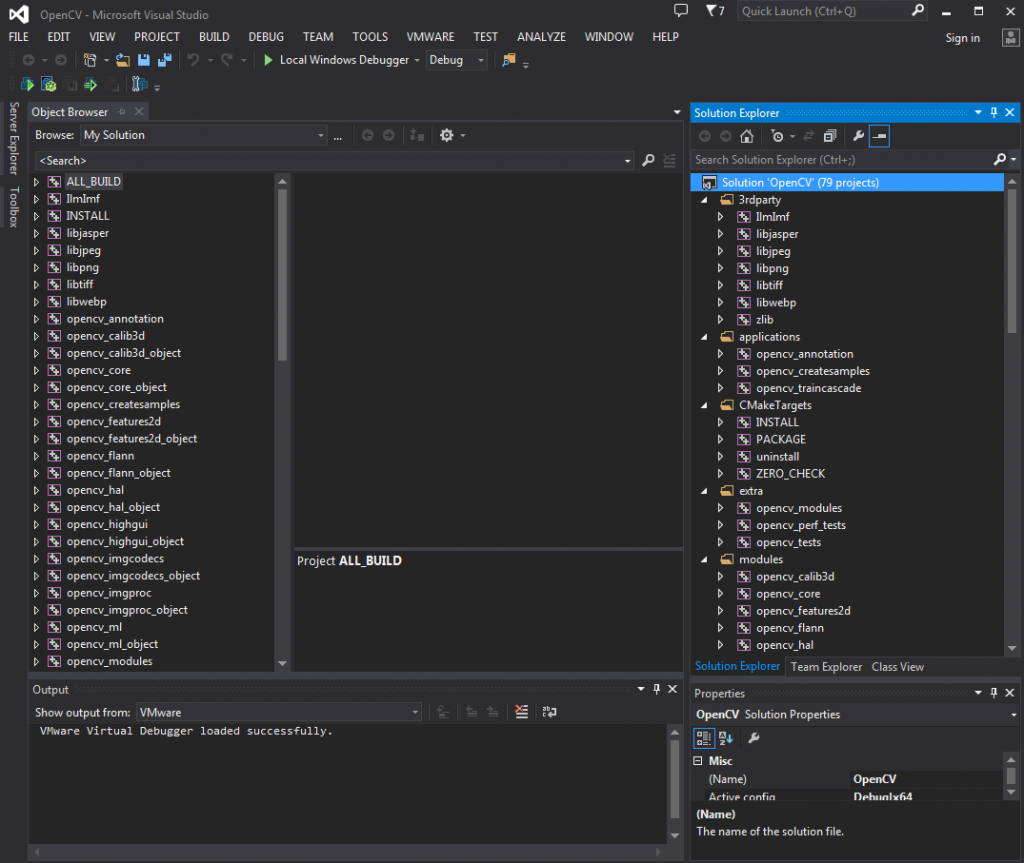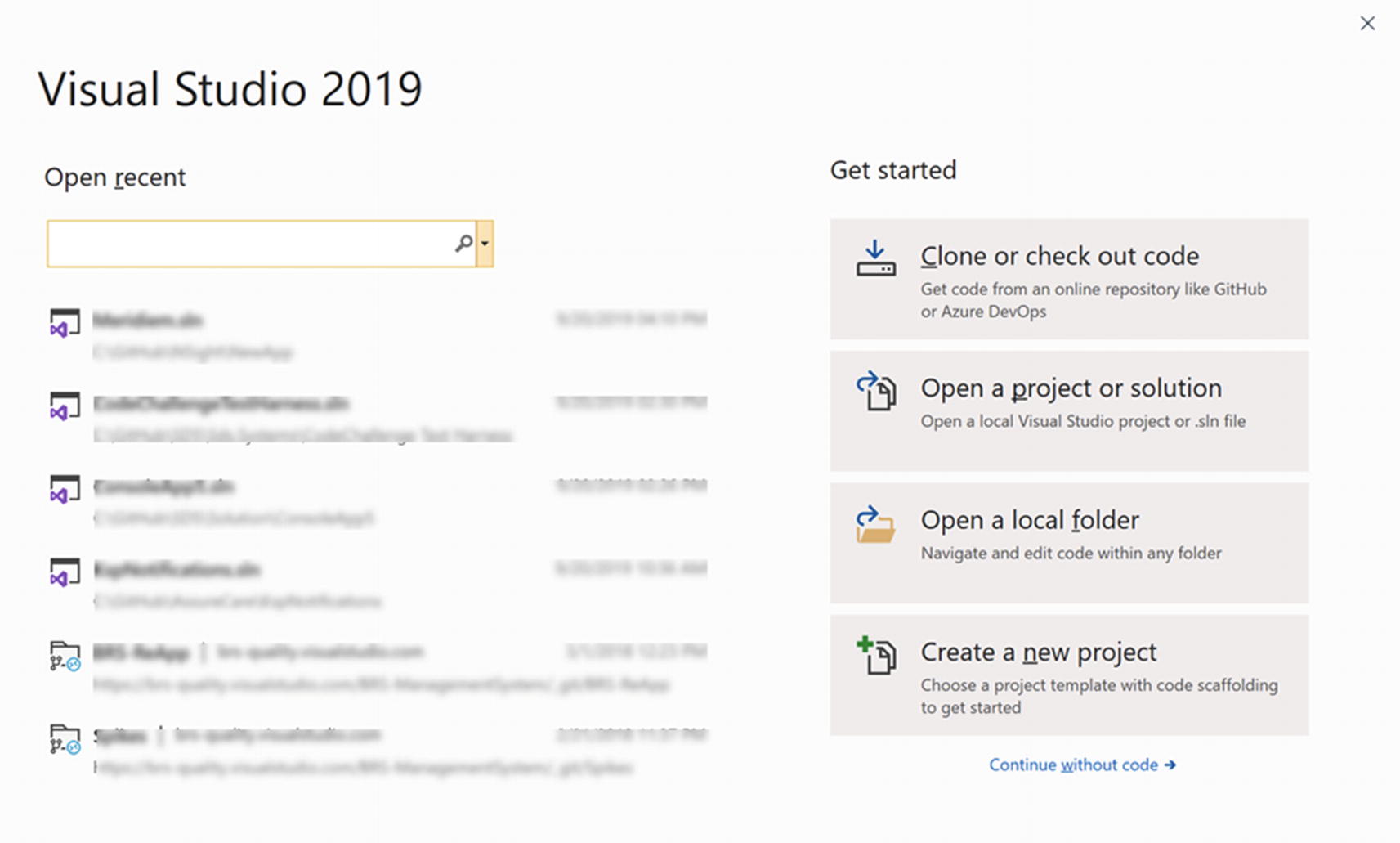This extension adds a Visual Studio Solution File explorer panel in Visual Studio Code. Now you can navigate into your solution following the original Visual Studio structure.
Why would a.sln solution file open and appear empty in Microsoft Visual Basic 2010 Express - i.e. No windows showing projects and code files etc. When I inspect the file in a text editor, it contains references to vbproj files (which are present) which indicate that it should not appear as empty. Choose either C# or Visual Basic. After the.zip file has downloaded, extract it and open the ExpenseItIntro.sln file using Visual Studio. Create a custom build configuration. When you create a solution, debug and release build configurations and their default platform targets are defined for the solution automatically. This cross-platform development tool can run on – Windows, Linux, and OS X. Both Visual Studio IDE and Visual Studio Code are very powerful editors and almost everyone must be familiar with using these editors. In this post, I will show you how you can open your current project in Visual Studio Code directly from Visual Studio IDE.
Features
Adds a Solution Explorer panel where you can find a Visual Studio Solution File Explorer.
Next, you can open this.csproj file in Visual Studio. If you have a web project (without a.sln), you must do: Menu File → Open → Web Site. And choose the folder where the project is. An even simpler way in Visual Studio is to follow this: Choose the source file location and a.csproj and.sln file is created. Video 1 - How to download and open the solution. The example code below is part of the Send-SMS.sln Visual Studio Solution. A visual studio solution can contain multiple projects and multiple files. In this solution there is only two projects: Send-SMS.fsproj, Ozeki.Libs.Rest.csproj, and one file: Send-SMS.fs. Figure 3 - Send-SMS.sln.
Can load any .sln version
Supports csproj, vcxproj, fsproj and vbproj (from vs2017 and before)
Supports dotnet core projects
You can create, delete, rename or move project folders and files.
You can create, delete, rename or move solution, solution folders and projects.
You can add or remove packages and references when the project is of kind CPS (dotnet core).
Requirements
You have to open a folder with at least one solution file ('.sln') in the root path.
Or you can create a new one by clicking with the right mouse button.

License
The source code is licensed under the MIT license.
The icons from (vscode-icons extension) are licensed under the Creative Commons - ShareAlike (CC BY-SA) license.
Branded icons are licensed under their copyright license.
Extension Settings
vssolution.showModeShow the solution explorer in the 'activityBar', in the 'explorer' pane or 'none' to hide it. This feature is only for testing pourposes.vssolution.solutionExplorerIcons'solution-explorer': custom items from vscode-solution-explorer extension. 'mix': file and folder icons from the installed icons theme. 'current-theme': all the icons are from the installed icons theme.vssolution.showOutputChannelShow the solution explorer output channel.vssolution.trackActiveItemSelect the active editor file in the solution explorer (not recomended).vssolution.netcoreIgnoreFolder and file names to ignore when get a dotnet core project content.vssolution.xxprojItemTypesType of XML element to put in the xxproj files.vssolution.xmlspacesSpaces to be used for indenting XML output. It could be a number or an string. ex. '2', ' ' or 't'.vssolution.altSolutionFoldersIf there is no solution in the workplace root folder, it will search for solutions in any of these folders.vssolution.win32EncodingWin32 'codepage' to 'iconv.js' encoding equivalences.
Example
Known Issues
Please report your issues: vscode-solution-explorer GitHub page
Can I Open A Vb.net Sln In Visual Studio For Free
Release Notes
There is a lot of work to do.
0.4.4
Bugfix #177: cleaning console.log calls
Enhancement #175: adding 'Watch Run' command
Fixing Dependabot alerts
0.4.3
Bugfix #165: fixing error loading solutions from alt folders
Bugfix #118: replacing '&' by '&' in project XML quoted strings
0.4.2
Bugfix #164: revert #118 solution

Thanks to contributors
Enjoy!
-->
A solution is a structure for organizing projects in Visual Studio. The solution maintains the state information for projects in two files:
.sln file (text-based, shared)
.suo file (binary, user-specific solution options)
For more information about .suo files, see Solution User Options (.Suo) File.
If your VSPackage is loaded as a result of being referenced in the .sln file, the environment calls ReadSolutionProps to read in the .sln file.
The .sln file contains text-based information the environment uses to find and load the name-value parameters for the persisted data and the project VSPackages it references. When a user opens a solution, the environment cycles through the preSolution, Project, and postSolution information in the .sln file to load the solution, projects within the solution, and any persisted information attached to the solution.
Each project's file contains additional information read by the environment to populate the hierarchy with that project's items. The hierarchy data persistence is controlled by the project. The data is not normally stored in the .sln file, although you can intentionally write project information to the .sln file if you choose to do so. For more information about persistence, see Project Persistence and Opening and Saving Project Items.
File header
The header of a .sln file looks like this:
Definitions
Microsoft Visual Studio Solution File, Format Version 12.00
Standard header that defines the file format version.
# Visual Studio 15
The major version of Visual Studio that (most recently) saved this solution file. This information controls the version number in the solution icon.
VisualStudioVersion = 15.0.26730.15
The full version of Visual Studio that (most recently) saved the solution file. If the solution file is saved by a newer version of Visual Studio that has the same major version, this value is not updated so as to lessen churn in solution files.

MinimumVisualStudioVersion = 10.0.40219.1
The minimum (oldest) version of Visual Studio that can open this solution file.
Definitions
Microsoft Visual Studio Solution File, Format Version 12.00
Standard header that defines the file format version.
# Visual Studio Version 16
The major version of Visual Studio that (most recently) saved this solution file. This information controls the version number in the solution icon.
VisualStudioVersion = 16.0.28701.123
The full version of Visual Studio that (most recently) saved the solution file. If the solution file is saved by a newer version of Visual Studio that has the same major version, this value is not updated so as to lessen churn in the file.
MinimumVisualStudioVersion = 10.0.40219.1
The minimum (oldest) version of Visual Studio that can open this solution file.
File body
The body of an .sln file consists of several sections labeled GlobalSection, like this:
To load a solution, the environment performs the following sequence of tasks:
The environment reads the Global section of the .sln file and processes all sections marked
preSolution. In this example file, there is one such statement:When the environment reads the
GlobalSection('name')tag, it maps the name to a VSPackage using the registry. The key name should exist in the registry under [HKLM<Application ID Registry Root>SolutionPersistenceAggregateGUIDs]. The keys' default value is the Package GUID (REG_SZ) of the VSPackage that wrote the entries.The environment loads the VSPackage, calls
QueryInterfaceon the VSPackage for the IVsPersistSolutionProps interface, and calls the ReadSolutionProps method with the data in the section so the VSPackage can store the data. The environment repeats this process for eachpreSolutionsection.The environment iterates through the project persistence blocks. In this case, there is one project.
This statement contains the unique project GUID and the project type GUID. This information is used by the environment to find the project file or files belonging to the solution, and the VSPackage required for each project. The project GUID is passed to IVsProjectFactory to load the specific VSPackage related to the project, then the project is loaded by the VSPackage. In this case, the VSPackage that is loaded for this project is Visual Basic.
Each project can persist a unique project instance ID so that it can be accessed as needed by other projects in the solution. Ideally, if the solution and projects are under source code control, the path to the project should be relative to the path to the solution. When the solution is first loaded, the project files cannot be on the user's machine. By having the project file stored on the server relative to the solution file, it is relatively simple for the project file to be found and copied to the user's machine. It then copies and loads the rest of the files needed for the project.
Based on the information contained in the project section of the .sln file, the environment loads each project file. The project itself is then responsible for populating the project hierarchy and loading any nested projects.
After all sections of the .sln file are processed, the solution is displayed in Solution Explorer and is ready for modification by the user.
If any VSPackage that implements a project in the solution fails to load, the OnProjectLoadFailure method is called and every other project in the solution is given a chance to ignore changes it might have made during loading. If parsing errors occur, as much information as possible is preserved with the solution files and the environment displays a dialog box warning the user that the solution is corrupted.
Can I Open A Vb.net Sln In Visual Studio Files
When the solution is saved or closed, the QuerySaveSolutionProps method is called and passed to the hierarchy to see if changes have been made to the solution that need to be entered into the .sln file. A null value, passed in to QuerySaveSolutionProps in VSQUERYSAVESLNPROPS, indicates that information is being persisted for the solution. If the value is not null, the persisted information is for a specific project, determined by the pointer to the IVsHierarchy interface.
If there is information to be saved, the IVsSolutionPersistence interface is called with a pointer to the SaveSolutionProps method. The WriteSolutionProps method is then called by the environment to retrieve the name-value pairs from IPropertyBag interface and write the information to the .sln file.
SaveSolutionProps and WriteSolutionProps objects are called recursively by the environment to retrieve information to be saved from the IPropertyBag interface until all changes have been entered into the .sln file. In this way, you can insure that the information will be persisted with the solution and available next time the solution is opened.
Every loaded VSPackage is enumerated to see if it has anything to save to .sln file. It is only at load time that the registry keys are queried. The environment knows about all of the loaded packages because they are in memory at the time the solution is saved.
Can I Open A Vb.net Sln In Visual Studio File
Only the .sln file contains entries in the preSolution and postSolution sections. There are no similar sections in the .suo file since the solution needs this information to load properly. The .suo file contains user-specific options, such as private notes, that are not intended to be shared or placed under source code control.